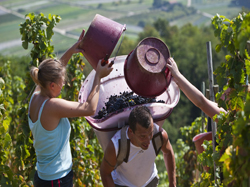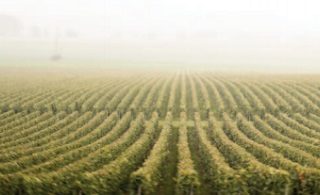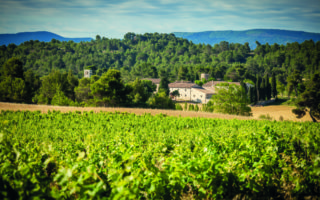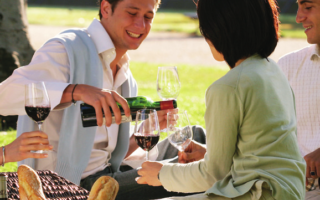Behind the label: Rhône wines

Heading for the south of France you’ll notice that not a great deal really changes until you pass the imaginary line linking Bordeaux to Grenoble. Until this point the vegetation is lush, the rolling hills are not too dissimilar to England and it rains a lot.
Past this line, however, the landscape begins to change dramatically. Conditions are influenced more by the Mediterranean than the Atlantic and of course, as wine enthusiasts will know, we get the famous mistral wind. Cypress and cherry trees become abundant and the soil becomes noticeably more acrid.
The Rhône Valley lies directly south of Burgundy and, ironically enough, produces wines that, when mature, can taste markedly similar to the great Pinot Noirs of it’s northernmost neighbour. The grape varietals planted in the Rhône, however, could not be more different. Here the reds are made principally from Syrah and Grenache, depending on whether they’re from the North or the South, and the whites are made not from Chardonnay but from the lesser known varietals such as Marsanne, Roussanne and Viognier. These whites are rich and fleshy whilst the reds are robust, flavoursome and some notably ageworthy.
The vineyards of the Rhône follow the line of the Rhône river stretching from Côte Rôtie in the north to Châteauneuf du Pape and Tavel in the South. The region is split at Valence with all the vineyards north being recognized as Northern Rhône and all those south of Valence as Southern Rhône. These regions differ in climatic conditions, they grow different varietals and make very different styles of wine.
The only permitted red grape varietal in the Northern Rhône is Syrah. Syrah makes some of the finest red wines in the Rhône Valley which itself produces some of France’s finest. The northernmost and arguably the most famous of the Northern Rhône red appellations is Côte Rôtie – ‘Roasted Slope’ in English which describes the landscape perfectly. Vineyards are planted on some of the steepest slopes in France on granite soils for the Côte Blonde and on iron rich soils for the Côte Brune. Here 20% of the white grape Viognier is allowed in to the blend producing wines with remarkable aromatics and fabulous finesse. Whilst powerful these wines are some of the most elegant and complex of the region.
Some celebrated names
As we head south we travel through the tiny white wine appellations of Condrieu and, even smaller, Château Grillet which produce some of the most remarkable of France’s white wines from Viognier. We then reach Saint Joseph, Crozes Hermitage, it’s more majestic neighbour Hermitage then Cornas. Cornas is the only region which must make it’s wine solely from Syrah and these wines exhibit possibly the most pronounced farm yard like aromas along with the fabulous floral notes found in all of the other villages.
Yet further south the climate becomes more maritime with the influence of the Med. The mistral is less dominant and conditions, whilst hot, are more accommodating for the vigneron. Here the dominant red varietal is Grenache. The wines taste hot, spicy and alcoholic. Of course, the most famous appellation of the South is Châteauneuf du Pape which allows no fewer than 13 different grape varieties, both red and white, in to the blend. By far the main grape in Châteauneuf is Grenache, which also dominates the make-up of much of the Côtes du Rhône including Gigondas, Vaqueras and Rasteau, all major appellations in the Southern Rhône.
The Rhône, along with Burgundy and Bordeaux, produces some of the greatest red wines in France. Powerful and complex, they reflect the intensity of their terroir and produce qualities from Syrah and Grenache unobtainable anywhere else in the world.
Tom Gilbey works for www.thevintner.com
Share to: Facebook Twitter LinkedIn Email
More in river, travel, villages, vineyards, wine
Leave a reply
Your email address will not be published. Required fields are marked *



